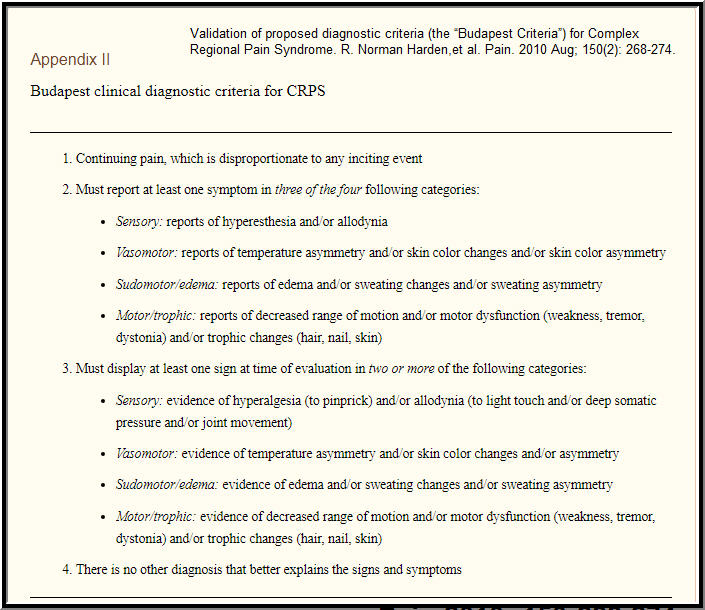1-Continuing pain, which is disproportionate to any inciting event
2-Must report at least one symptom inthree of the four following categories:
- Sensory: reports of hyperesthesia and/or allodynia
- Vasomotor: reports of temperature asymmetry and/or skin color changes and/or skin color asymmetry
- Sudomotor/edema: reports of edema and/or sweating changes and/or sweating asymmetry
- Motor/trophic:reports of decreased range of motion and/or motor dysfunction (weakness, tremor, dystonia) and/or trophic changes (hair, nail, skin)
3-Must display at least one sign at time of evaluation intwo or moreof the following categories:
- Sensory: evidence of hyperalgesia (to pinprick) and/or allodynia (to light touch and/or deep somatic pressure and/or joint movement)
- Vasomotor: evidence of temperature asymmetry and/or skin color changes and/or asymmetry
- Sudomotor/edema: evidence of edema and/or sweating changes and/or sweating asymmetry
- Motor/trophic: evidence of decreased range of motion and/or motor dysfunction (weakness, tremor, dystonia) and/or trophic changes (hair, nail, skin)
4-There is no other diagnosis that better explains the signs and symptoms |

